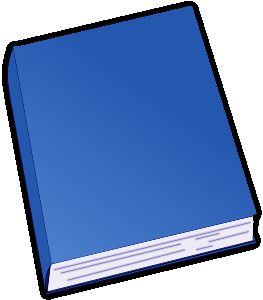Field's Chromatography or Treatise on Colours and Pigments as Used by Artists By: George Field (1777?-1854) |
|---|

In George Field's "Treatise on Colours and Pigments as Used by Artists," the author delves deep into the world of chromatography, providing artists and enthusiasts with a detailed understanding of color and pigments. This comprehensive guide, filled with Field's expertise, brings forth a wealth of knowledge on the subject.
Field begins the book with an introduction to the principles of chromatography, creating a strong foundation for readers to build upon. He explains the science behind color, discussing the interactions of light with various objects and how it influences the way we perceive colors. This scientific approach grants the reader a deeper appreciation for the complexity of pigments and the importance of their selection.
The book features an extensive exploration of different pigments used by artists throughout history. Field categorizes pigments into various groups based on their properties and origins, discussing minerals, plants, and animals as sources of color. He elaborates on each pigment's characteristics, such as their lightfastness, transparency, and chemical reactions. Field's thoroughness provides readers with valuable insights into the best choices for achieving desired effects in their artworks.
As the book progresses, Field delves into more specific topics, addressing techniques for preparing and applying pigments. He covers topics like grinding pigments, preparing color charts, and mixing colors to achieve various shades and hues. Field's instructions are clear and easy to follow, making this treatise an invaluable resource for both beginners and experienced artists seeking to enhance their craft.
The illustrations in the book are exceptional, showcasing the vibrancy and diversity of colors discussed throughout the pages. These visual aids help readers understand the effects and possibilities of different pigments, serving as a source of inspiration. Field's inclusion of color charts adds practical value, allowing artists to experiment and recreate specific hues with confidence.
One of the book's most significant strengths lies in Field's historical insights. He not only explores pigments used in his era but also delves into the rich historical background of color pigments. Field's meticulous research sheds light on ancient methods and materials, allowing readers to understand the evolution of artists' palette choices throughout time.
The only minor drawback of this treatise is its occasionally excessive technical language. While the scientific explanations are essential for a complete understanding, some readers, particularly those without a scientific background, may find it overwhelming at times. However, with patience and perseverance, the wealth of knowledge gained from this treatise far outweighs this minor drawback.
Overall, George Field's "Treatise on Colours and Pigments as Used by Artists" is a true masterpiece. Its comprehensive exploration of chromatography, detailed analysis of pigments, and historical insights make it an indispensable resource for any artist seeking to expand their understanding and mastery of color. With its practical instructions and inspiring illustrations, this book will undoubtedly become a cornerstone in every artist's library. FIELD'S CHROMATOGRAPHY; OR, TREATISE ON COLOURS AND PIGMENTS AS USED BY ARTISTS. AN ENTIRELY NEW AND PRACTICAL EDITION ; REVISED, REWRITTEN, AND BROUGHT DOWN TO THE PRESENT TIME. BY THOMAS W. SALTER, F.C.S. Ars probat artificem. LONDON: WINSOR AND NEWTON, 38, RATHBONE PLACE, Manufacturing Artists' Colourmen by Special Appointment to Her Majesty, and Their Royal Highnesses the Prince and Princess of Wales. [The Right of Translation is reserved.] CONTENTS. PART I. ON COLOURS AND COLOURING. Chapter. Page. I. On Colouring 3 II. On the Relations and Harmonies of Colours 13 PART II. ON COLOURS AND PIGMENTS GENERALLY. III. On Classes of Colours 27 IV. On the Durability and Fugacity of Pigments 31 V. On the General Qualities of Pigments 46 PART III. ON COLOURS AND PIGMENTS INDIVIDUALLY. VI. On Colours and Pigments individually 57 VII. On the Neutral, White 62 VIII. On the Primary, Yellow 81 IX... Continue reading book >>
|
| This book is in genre |
|---|
| Art |
| eBook links |
|---|
| Wikipedia – George Field |
| Wikipedia – Field's Chromatography or Treatise on Colours and Pigments as Used by Artists |
| eBook Downloads | |
|---|---|
|
ePUB eBook • iBooks for iPhone and iPad • Nook • Sony Reader |
Kindle eBook • Mobi file format for Kindle |
|
Read eBook • Load eBook in browser |
Text File eBook • Computers • Windows • Mac |
| Review this book |
|---|